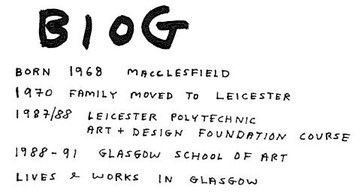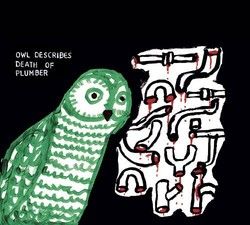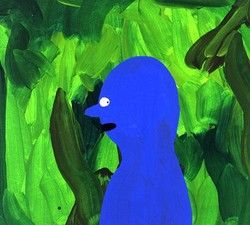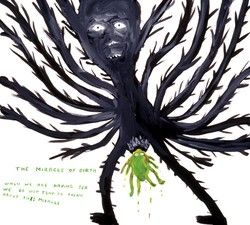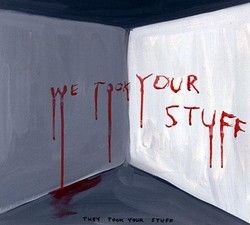Preface:
After I drew The Fetish Scream as my Halloween entry for my blog, my brother who'd seen my work e-mailed me & asked me to write about Scream (preferably on Scream & cartoons) in here, considering the fact that it is undoubtedly a very famous icon of modern art & no wonder why & how it is still being quoted by other artists around the world. So here is a very brief history of Scream on surface:
The
Scream (Skrik, 1893) is a seminal Expressionist painting by Norwegian artist
Edvard Munch. Regarded by many as his most important work, it symbolizes modern man taken by an attack of existential angst. The landscape in the background is Oslofjord, viewed from the hill of Ekeberg. The Norwegian word skrik is usually translated as "scream", but is cognate with the English shriek. The Scream has come more and more to be accepted as Edvard Munch's most significant motif - the very symbol of modern man, for whom God is dead and for whom materialism provides no solace. Munch wrote several versions of a prose-lyrical associated with the motif, one of which reads:
I was walking along a path with two friends - the sun was setting - suddenly the sky turned blood red - I paused, feeling exhausted, and leaned on the fence - there was blood and tongues of fire above the blue-black fjord and the city - my friends walked on, and I stood there trembling with anxiety - and I sensed an infinite scream passing through nature.
 Edvard Munch
Scream
Edvard Munch
Scream, 1895
Lithograph
In the late 20th century, The Scream acquired iconic status in popular culture. In 1983-1984, pop artist Andy Warhol made a series of silk prints of works by Munch, including The Scream. The idea was to desacralize the painting by devaluating its originality and making it into a mass-reproducible object. However, as remarked above, Munch had already begun that process himself, by making a lithograph of the work for reproduction. Munch translated The Scream into lithograph in 1895 so that it could be reproduced all over the world.
Andy Warhol and Erró are examples of artists who quote Munch's The Scream in a most direct manner. Warhol's 1983 pop version of The Scream is part of a series of silk prints in which he reproduces a number of Munch's main works such as Madonna and The Brooch/Eva Mudocci and Self-Portrait with Skeleton Arm. The Scream possesses special status among these because it stands as an icon of the modern experience of being alone in the crowd. This theme can also be seen as a continuation of a number of Warhol's other themes, which are also centered on death, an example being his Marilyns and Death and Disaster series.
 Andy Warhol
Scream
Andy Warhol
Scream, 1984
Synthetic polymer silkscreen print on canvas, 132x96.5cm
As with other masterpieces from the history of art such as Leonardo da Vinci's Mona Lisa, Warhol exploits the status of The Scream as an icon, an aspect of the work he underlines by re-using it. Yet at the same time he devalues its originality, because by contrast with the painting, the silk print can be endlessly mass-produced. In the context of the consumer society mimicked by pop-art, he questions art as a consumer product.
 Erró
Ding Dong
Erró
Ding Dong, 1979
Acrylics on canvas, 140x130cm
Erró's variations on The Scream are also in the pop genre. Yet by contrast with Warhol's cold aesthetic of the surface, Erró gives his creations a critical and satirical twist. In Ding Dong (1979), he decks Munch's work out in comic-like features. In The Scream, the scream is specifically set against the racket from a group of children in a school playground, while in The Second Scream (1967), the scream has to drown out what is clearly an infernal din from a plane, which becomes a reference to the occupation of Norway and, more generally, to the horrors of World War 2.
 Erró
The Second Scream
Erró
The Second Scream, 1967
Acrylics on canvas, 75x85cm
The works' reproduction on all kinds of items, from tee shirts to coffee mugs, bear witness of its iconic status as well as of its complete desacralization in the eyes of today's public. In that respect, it is comparable to other iconic works of art, such as Leonardo da Vinci's Mona Lisa. The Scream is an emotionally very potent work, and the banalization of the image in popular culture can be interpreted as an attempt to defuse the feeling of unease it inevitably provokes in the viewer.
 The inflatable scream
The inflatable scream
An American moralist, Robert Fishbone, discovered a gap in the market when in 1991 he started selling inflatable dolls of the central figure in the painting. His St. Louis-based company, On The Wall Productions, has sold hundreds of thousands of them. Critics will observe that by taking the figure out of its context (the landscape), Fishbone has destroyed the unity of Munch's work, thereby neutralizing its expressive force.
As one of very few works of modern art that are instantly recognizable even to people who know very little about art, The Scream has been used in advertising, on television & in cartoons. The work has also fascinated film makers. Ghostface, the crazy slasher in Wes Craven's Scream horror movies, wears a Halloween mask reminiscent of the central figure in the painting. Child actor Macauley Culkin's pose in front of the mirror, in Home Alone by Chris Columbus, also refers ironically to Munch's work.
I will post some cartoon samples related to Scream in my next entry!
For now safe everyone!












